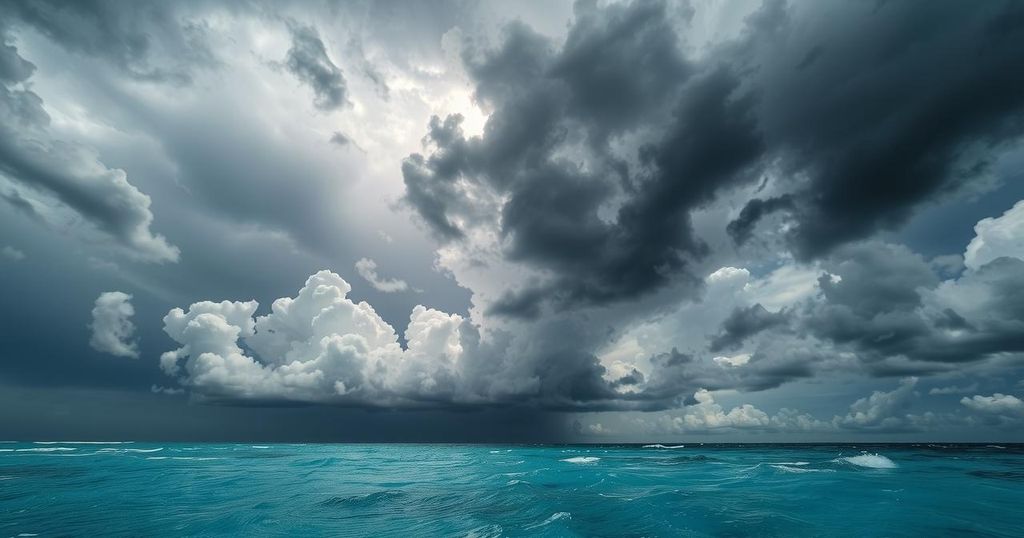Tropical Storm Dikeledi Approaches Mozambique After Devastating Madagascar

Tropical Storm Dikeledi is advancing towards Mozambique after causing three deaths in Madagascar and flooding in Mayotte. Despite weakening, it remains a threat, with warnings issued for dangerous weather conditions as residents grapple with the region’s vulnerability following Cyclone Chido.
Tropical Storm Dikeledi has moved towards Mozambique, having previously impacted Madagascar and Mayotte with significant destruction. After forming as a cyclone over Madagascar’s northern coast on Saturday, it resulted in three fatalities and severe flooding. As it transitions to a severe tropical storm, Dikeledi is forecasted to intensify further while approaching Mozambique. Authorities have advised caution, particularly in low-lying coastal communities affected by high tides and ongoing rainfall. Although no additional casualties have been reported, Mayotte has remained under a red alert since Saturday, with local officials monitoring the situation closely because of heightened vulnerability following Cyclone Chido, which previously caused notable devastation in the region.
In the Indian Ocean, cyclonic activity typically peaks between November and March, with Tropical Storm Dikeledi being the latest to affect the region. Earlier cyclones, such as Cyclone Chido, had already devastated parts of Madagascar and Mozambique, demonstrating the increasing severity and frequency of such weather events. The proximity of warm ocean water provides conditions conducive to forming intense storms, raising concerns among meteorological agencies about possible disasters. The region’s residents are grappling with the aftermath of previous cyclones while preparing for the impending impact of Dikeledi.
In conclusion, the impending approach of Tropical Storm Dikeledi towards Mozambique, following its destructive path through Madagascar and Mayotte, highlights the ongoing risks posed by tropical cyclones in the region. As officials enforce safety measures and monitor conditions, the ongoing threat of severe weather underscores the need for preparedness and resilience among vulnerable populations. The focus now shifts to minimizing further damages and safeguarding inhabitants against the anticipated destructive winds and rainfall.
Original Source: www.arabnews.com








